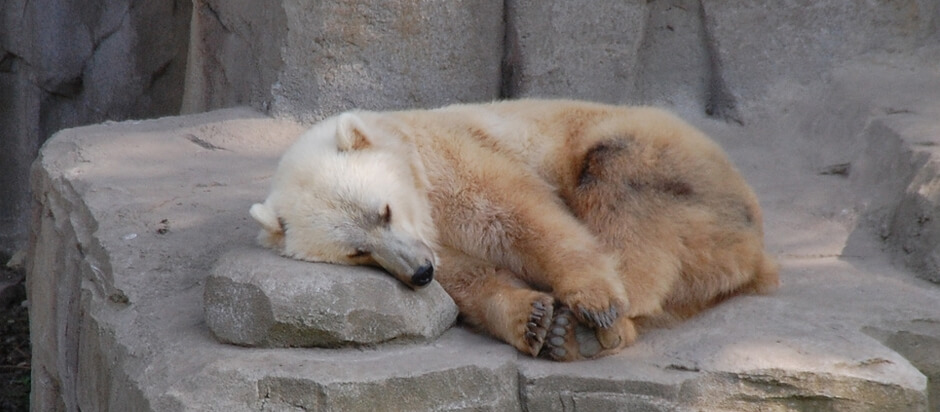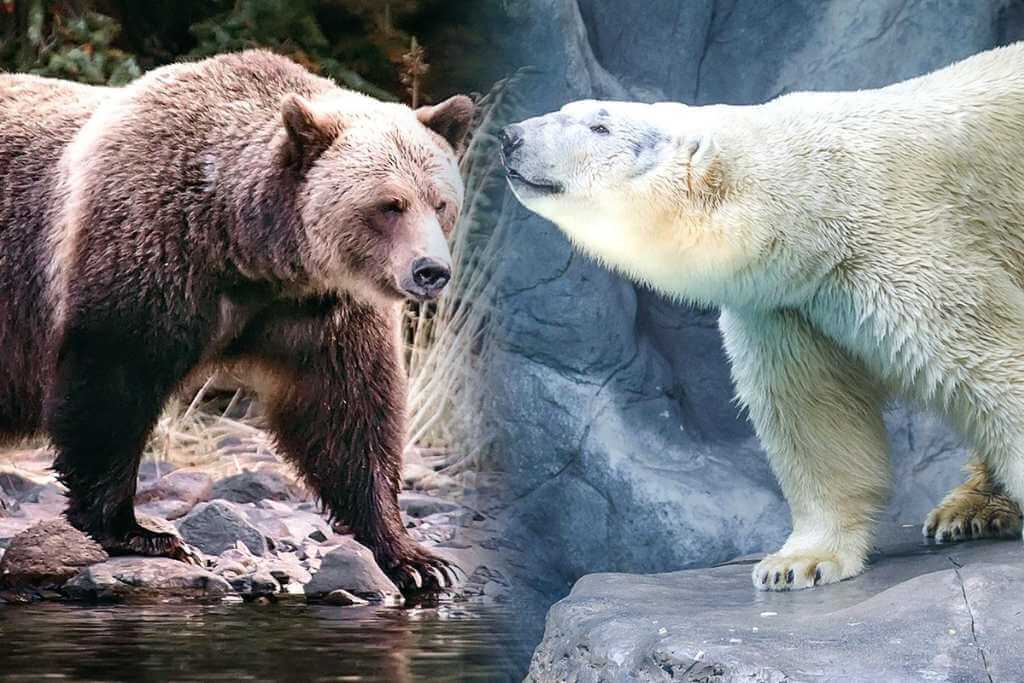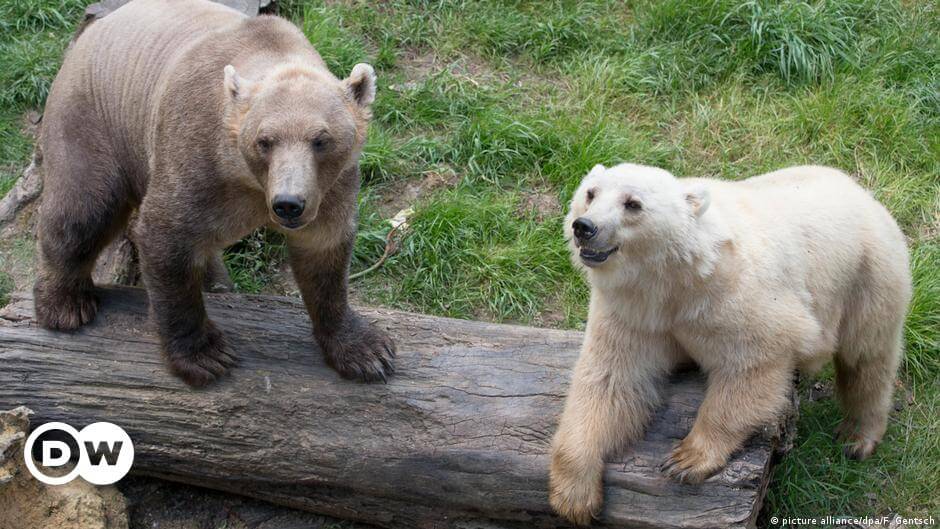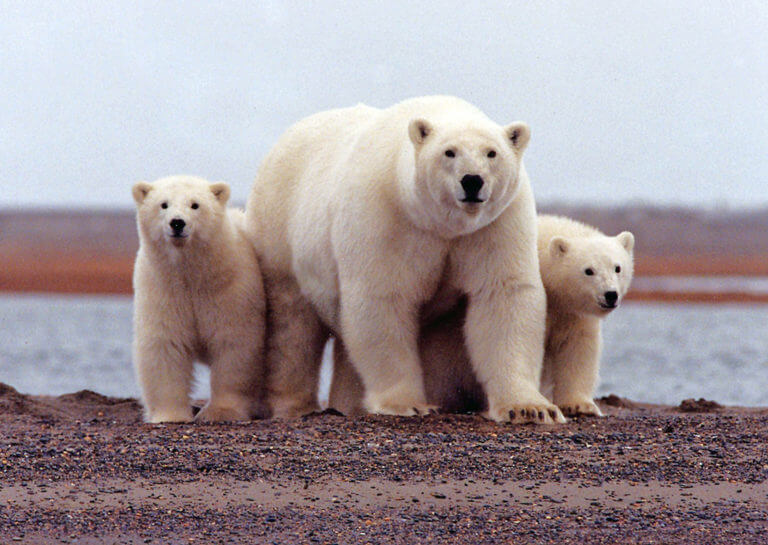In Russia, polar bears and brown bears have started mating, generating hybrid pups more resistant to climate change. Evidence of the species, often called as ‘Brolar bears’ or ‘Pizzlies,’ has already been discovered in the United States and Canada.
However, brown bears have been observed in the Russian Far East, where polar bears live. This leads experts to believe that hybridization will happen soon.

Brolar bears, do not rely as much on sea ice for their prey as their polar bear relatives. Moreover, they can withstand higher temperatures than polar bears. These hybrid bears have mostly white fur with a hint of red. There is also a polar bear-like nose and a brown or grizzly bear.
WHY ARE POLAR BEARS AND GRIZZLY BEARS A MATING?
Polar bears thrive on a specialized blubber diet and hunt for seals on sea ice.
Many studies have proved that the Arctic ice cover is thinning, making it more challenging for them to get the necessary nutrition.
Polar bears have been observed migrating inwards in search of food due to changing terrain.
Brown bears have been able to hunt further north due to warmer temperatures. The two species then encounter each other when their habitats overlap. As a result, hybrid cubs have been born, and they were first sighted in the wild in 2006.

The Laptev and Chukchi-Alaska polar bear populations live in the Republic of Sakha, also known as Yakutia.
Scientists discovered over 60 polar bears in the region during October surveys, which are protected as part of the Bear Islands Nature Reserve.
Dr. Innokentiy Okhlopkov, a biologist of the Russian Academy of Sciences’ Siberian Branch (SBRAS), told Russian news agency TASS about the rising prevalence of brolar bears.
‘Brown bears are going onto the tundra,’ she claimed. Pizzly bear have been spotted in the lower parts of the Kolyma River, which is home to polar bears.
‘Brown bears, for example, have been spotted in the Anabar District. It is conceivable that hybrids of polar and brown bears will exist in the future.’
Polar bears live on a specialized diet of fat and hunt seals that come up from the water for the atmosphere.
According to Larisa DeSantis of Vanderbilt University, “the polar bear and grizzly bear shared a common ancestor 500,000 to 600,000 years ago, but then they divided.”
Polar bear molars are smaller than grizzly bear molars, but their canines are larger. This is because they eat jello all day, which is blubber.

‘However, polar bears have extended skulls that are well adapted to hunting seals.’
However, numerous studies have demonstrated that the Arctic ice cover is thinning, making it more difficult for them to obtain the necessary nutrients.
NASA confirmed this year’s Arctic winter sea ice to be the ninth lowest on record, with an area 40 times the size of Wales absent.
According to NASA, these patterns are related to warming brought on by human activities like carbon dioxide emissions, which trap heat in the atmosphere and raise temperatures.
According to the Institute of Permafrost Studies at SBRAS, the average annual air temperature in Yakutia has risen by 1.26°F (1.1°C) in the last 50 years to 38°F (3.4°C).
Polar bears have been observed migrating inwards in search of food due to changing terrain.
Because of the rising temperature, brown bears may now hunt further north, and the two species confront each other when their habitats overlap.

As a result, these bears gave birth to bear hybrids. It was first discovered in the wild in 2006, when Arctic hunters in Canada killed a brown-spotted white bear.
GrGrizzly bears, unlike polar bears. They are well-adapted to eating hard foods such as tubers or scavenging when resources are scarce.
This suggests that brolar bears are better adapted to shifting diets and climates than polar bears, which could help preserve the polar gene.
Experts have warned, however, that because brown bears outnumber their northern cousins, they may ‘eat polar bears up, genetically.’
According to research, dwindling polar habitats force animals to inbreed, limiting offspring fertility and engaging in cannibalism.
According to a 2020 study, most polar bear populations are at risk of extinction by 2100. Global warming is reducing their natural habitat in the Arctic sea ice.
They are also vulnerable to poaching, including trophy hunting and pollution.
12 Interesting Things To Know About Polar Bears in Churchill
Essential tips for seeing polar bears in Canada
Two bear cubs are holding hands while their mother hunts for food